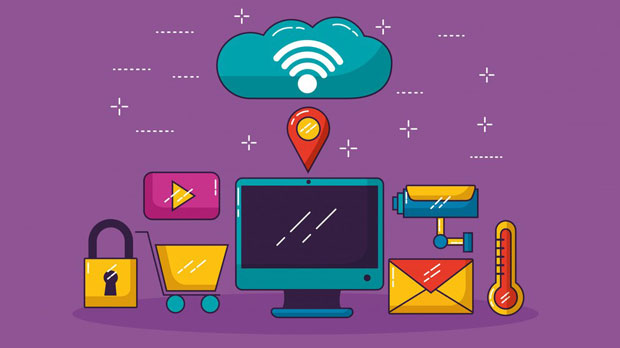In today's digital era, the internet has become an essential tool for learning, working, and communication. However, in many organizations and educational institutions, network administrators implement certain restrictions and filters to control internet usage. This often includes blocking access to specific websites for security, productivity, or policy reasons. Consequently, individuals sometimes seek methods to bypass these restrictions, such as using free website unblocker tools. The question arises: is it compliant to use these unblockers in business or school environments? This article explores the compliance concerns associated with using free website unblockers in such settings, focusing on security, legal implications, and ethical considerations. Understanding Website UnblockersWebsite unblockers are online tools designed to bypass network restrictions, allowing users to access websites that may have been blocked by network administrators. These tools typically work by masking the user's IP address or rerouting internet traffic through proxy servers. While free website unblockers are easily accessible, their use in business or school environments can raise several concerns, both legal and ethical.Legal and Compliance ConcernsViolation of Network Usage PoliciesMost companies and educational institutions establish clear network usage policies that outline acceptable internet behavior. These policies often include prohibitions on accessing non-work or non-educational websites, to maintain productivity and safeguard network security. Using free website unblockers to bypass these restrictions could be considered a violation of these policies.Network administrators have a responsibility to enforce these policies, and bypassing them may lead to disciplinary action, ranging from warnings to termination of employment or expulsion in severe cases. Therefore, individuals who use unblockers should be aware that they could face legal consequences for breaching their organization's policies.Data Protection and Privacy RisksA major legal concern when using free website unblockers is data privacy. Unblockers often require users to redirect their internet traffic through third-party servers, which can expose sensitive information to external parties. In both business and educational environments, where confidential data (such as client details, financial records, or student data) is frequently accessed, privacy risks are heightened.For example, if a free unblocker service logs user data or fails to adequately encrypt internet traffic, it could inadvertently compromise the security of sensitive information. In such cases, both the organization and the individual using the unblocker could be at risk of violating data protection regulations such as GDPR (General Data Protection Regulation) in Europe or similar laws in other regions.Intellectual Property and Copyright IssuesAnother legal concern is intellectual property rights. Many websites, especially those with media content (e.g., movies, music, or software), are blocked by businesses or schools to prevent unauthorized access to copyrighted material. Using unblockers to access these restricted websites may infringe on intellectual property rights, potentially leading to legal ramifications.While this may not always be the case for educational materials, bypassing restrictions to access pirated or illegal content could expose individuals and organizations to lawsuits from copyright holders. As such, it is critical to understand the legal risks involved in using these unblockers for any purpose that violates intellectual property laws.Security RisksMalware and Phishing ThreatsSecurity is another significant concern when using free website unblockers. While these tools may seem harmless, many free unblocker services come with hidden risks, such as malware or phishing attempts. Free unblockers are often funded by advertisements or other questionable sources, making them vulnerable to exploitation.If users are redirected to malicious websites or unknowingly download harmful software, it could compromise both personal and organizational data. In businesses, this could lead to data breaches, financial losses, or a tarnished reputation. In schools, it may jeopardize the safety and privacy of students and faculty members.Network VulnerabilitiesUnblockers also pose a threat to network security. Since these tools route internet traffic through external servers, they can create vulnerabilities in the organization's network. Hackers or cybercriminals could exploit these weaknesses to gain unauthorized access to the network, steal sensitive information, or launch attacks such as Distributed Denial of Service (DDoS).In particular, businesses dealing with sensitive financial, healthcare, or government-related data could face severe repercussions if their network is compromised due to the use of unblockers.Ethical ConsiderationsUndermining Organizational TrustUsing website unblockers in the workplace or educational settings can also raise ethical concerns. When individuals bypass restrictions, they may be undermining the trust placed in them by their employers or institutions. Trust is an essential component of any organizational environment, and circumventing security measures without permission can be seen as unethical behavior.It’s important for employees and students to understand that bypassing restrictions not only violates trust but also creates an unhealthy work or learning environment. Transparency and honesty regarding internet usage policies are crucial for maintaining ethical standards.Productivity and FocusAnother ethical concern involves the impact on productivity. Businesses and schools typically block distracting websites to help employees or students focus on their tasks. Using unblockers to access these sites, especially during work hours or class times, can decrease productivity and lead to inefficiencies. Moreover, it can distract others in a shared environment, negatively affecting their ability to work or study.From an ethical standpoint, it is essential to respect the purpose behind internet restrictions. These measures are often put in place to ensure that all individuals can contribute to a focused and efficient working or learning environment.Alternatives to Website UnblockersRather than resorting to free website unblockers, individuals and organizations should consider alternative methods for addressing internet access issues. In the case of educational institutions, for example, students and faculty can request specific websites to be unblocked if they are crucial for research or academic purposes. Businesses may offer certain permissions for non-work-related browsing during breaks to support employee well-being without compromising productivity.For organizations that need to enforce strict internet usage policies, adopting a balanced approach that allows for occasional personal browsing while maintaining security is essential. This ensures that the needs of employees or students are met without undermining organizational or educational goals.In conclusion, while free website unblockers may offer a convenient way to bypass network restrictions, their use in business or school environments is fraught with legal, security, and ethical risks. Violating network usage policies, compromising sensitive data, and diminishing productivity are just a few of the potential consequences. To ensure compliance and uphold ethical standards, it is important for individuals to understand the implications of using such unblockers and for organizations to enforce clear internet usage policies. By fostering a transparent and secure online environment, both businesses and educational institutions can safeguard their operations and maintain a productive atmosphere.
Oct 16, 2025



































































